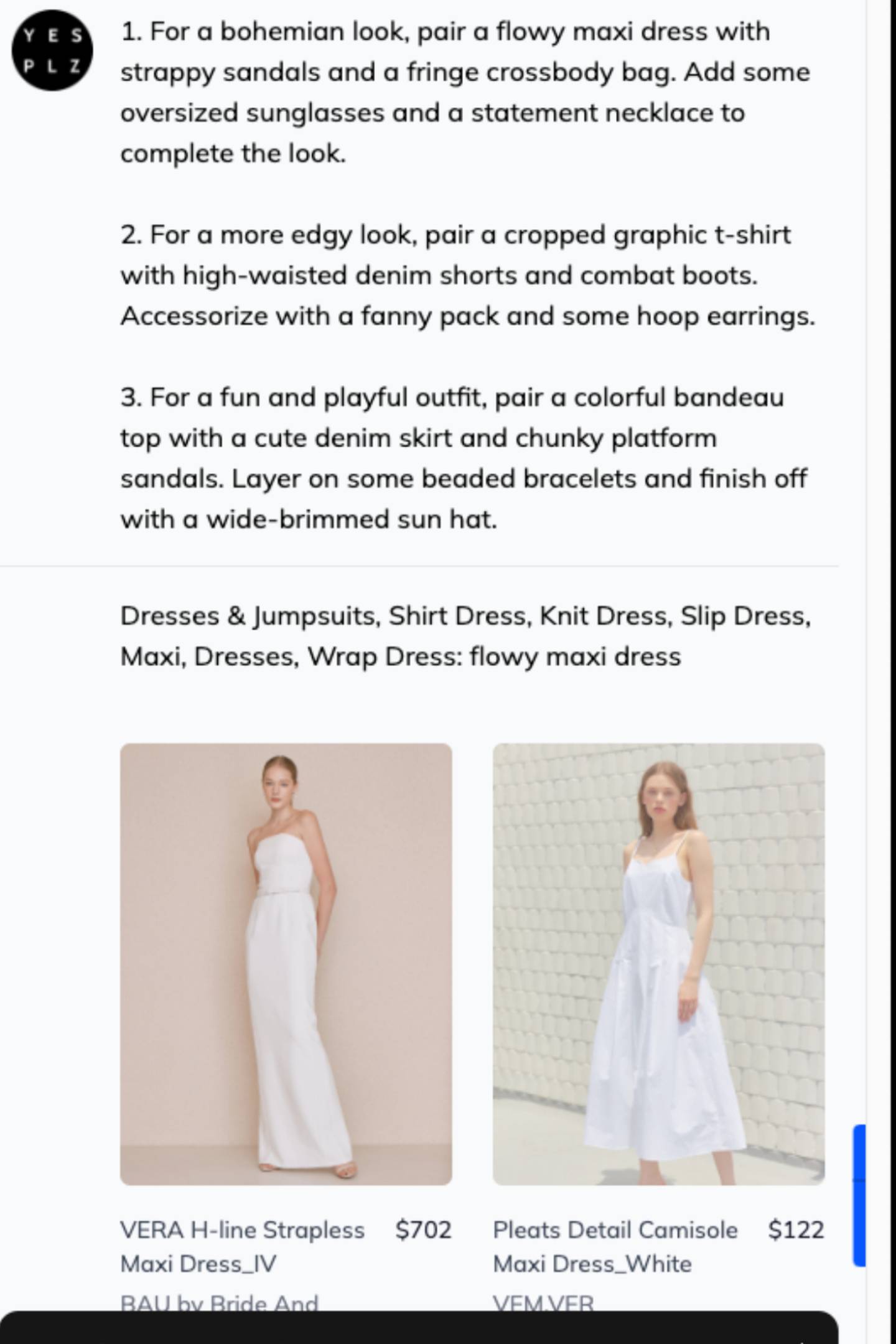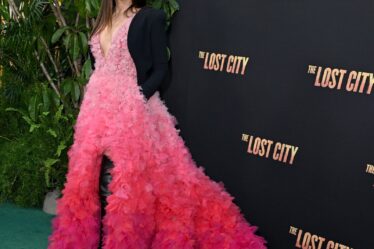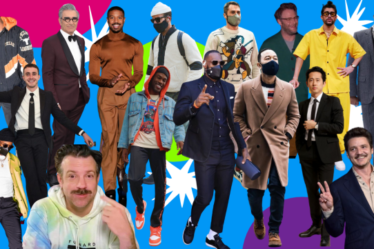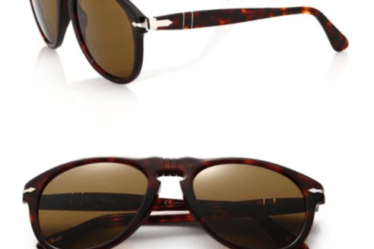
After the public release of ChatGPT, Jiwon Hong got an idea.
Hong, who is the chief executive of the start-up YesPlz, which aims to use AI-powered visual search to improve how shoppers find products and retailers recommend them online, noticed that members of a Facebook community she’s part of are frequently asking for outfit recommendations. They often pose questions like, “Can you make a suggestion for my vacation to Hawaii?” Or, “I’m meeting my boyfriend’s friends for the first time. What should I wear?”
“I thought, with ChatGPT and our image tagging, we can make this fashion stylist,” Hong said.
YesPlz’s new ChatGPT Fashion Stylist uses ChatGPT to generate outfit suggestions from user prompts and then YesPlz’s visual search capabilities to recommend matching products from a retailer’s catalogue. It’s currently in a private beta and not publicly released, but Hong said they showed the product at the recent Shoptalk conference and had a lot of interest.
It’s not the only company curious about how AI could play stylist. Online retailer Ssense has posted examples to Instagram of ChatGPT making up outfits from its products.
But how good can AI be at assembling outfits when it doesn’t really understand what it’s doing?
Generative AI like ChatGPT takes AI’s capacity for pattern recognition and effectively runs it backwards, as tech analyst Benedict Evans recently described it to BoF. Fed enough examples of something, it can follow the pattern and generate a new one. It doesn’t actually understand the inputs or outputs, however, which is why it’s prone to giving false answers that just sound like real ones.
In the case of fashion, it doesn’t understand why a pair of shoes works better with one dress than another the way a human stylist would, but it can follow the examples it’s trained on. It turns out this is enough to create a functional stylist.
When a BoF coworker told YesPlz’s ChatGPT Fashion Stylist they needed a classy outfit for a formal event, it suggested three options: a classic look consisting of a long evening gown in a dark colour like navy or black, paired with a statement necklace and clutch; a modern look made up of a jumpsuit in a bold colour like red or emerald green with metallic heels; and then a “glitz and glam” look focused on a sequin dress in gold or silver.
“Keep the rest of the outfit simple with minimal jewelry and classic pumps to ensure the dress is the centrepiece of your outfit,” it advised.
YesPlz’s product recommendations appear under the ChatGPT response. They mostly fit the products it suggests but are limited to what the retailer has in its catalogue, which occasionally led to mismatches between ChatGPT’s clothing suggestions and the products shown.
Playing around with the tool illustrated its potential and its limits. It can offer styling tips that go beyond accessories, like telling me to wear something I feel confident in when asked how to dress to impress a partner’s parents. But it also had a tendency to repeat ideas, just changing the styling or colours, and the options it offered weren’t always the most imaginative. Its idea of a Coachella outfit was spot on, meaning you’ve probably seen it before, like a flowy maxi dress with strappy sandals or a cropped T-shirt with denim shorts and combat boots.
Creativity, in fact, may be where an AI stylist struggles — or at least needs help from the human entering the prompt. (The prompt you use matters. The ChatGPT Fashion Stylist, for example, defaulted to women’s clothing when I used it unless I specified men’s clothing.)
In February, when Ssense asked ChatGPT to create an outfit using brands it carried, the AI offered a black turtleneck sweater by Acne, straight-leg Levi’s jeans and a pair of white Common Projects sneakers. Some followers who commented on the post were not impressed by the basic look. In subsequent posts, Ssense gave more guidelines, like telling ChatGPT which brands to choose from or asking for a New York Fashion Week look to ride the subway, meet friends and attend fashion shows.
For now, the company appears to be content just using ChatGPT for fun social content.
“While we’re still in the very early stages of understanding how AI will change our industry, the reality is that tools like ChatGPT and [AI image generator] Midjourney have already penetrated the popular discourse,” Thom Bettridge, head of creative and content for Ssense, said in an emailed statement. “While we as a culture all collectively play around with these new tools and what their potential is, there’s a lot of room for brands to join this online conversation.”
The standard ideas ChatGPT reproduces about which clothes should and shouldn’t work together may be overrated. On a recent episode of the clothing podcast “Articles of Interest,” which investigated attempts to build the computerized closet from the 1995 movie “Clueless,” host Avery Trufelman found one couple that preferred when a computer programme they created randomly generated their outfits. Chaos, Trufelman realised, could actually be a great stylist.
Beyond just offering clients new ideas, human stylists have skills like identifying what clothes work for a client’s body type and staying on top of trends. For that reason, ChatGPT doesn’t look ready to replace them just yet.
But it’s becoming more powerful. The newest version of the AI powering ChatGPT is capable of suggesting recipes based simply on a picture of food items in, say, an open refrigerator. It’s conceivable that one day it could also come up with different outfits based solely on a photo of the clothes in a closet. An algorithm can also be coded to include a level of randomness, which would produce more novel combinations.
The greatest impact of these abilities may not be on styling at all, however, but on how we shop for clothing online. Hong points out that, because of the way search engines work, we’re trained to use keywords like “squre neck orange tops” to find what we want.
“With ChatGPT, it’s just, ‘What should I wear today?’ We can talk naturally,” she said. “That’s the direction we’re heading and that’s what I’m most excited about.”
With additional reporting by Sarah Elson.



